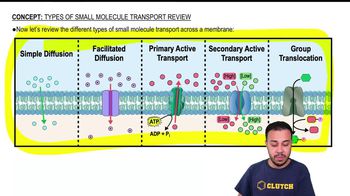Textbook Question
If you put a gene in a virus, the next step in genetic modification would be
a. insertion of a plasmid.
b. transformation.
c. transduction.
d. PCR.
e. Southern blotting.
96
views
 Verified step by step guidance
Verified step by step guidance



If you put a gene in a virus, the next step in genetic modification would be
a. insertion of a plasmid.
b. transformation.
c. transduction.
d. PCR.
e. Southern blotting.
Describe an rDNA experiment in two or three sentences. Use the following terms: intron, exon, DNA, mRNA, cDNA, RNA polymerase, reverse transcriptase.
You are attempting to insert a gene for saltwater tolerance into a plant by using the Ti plasmid. In addition to the desired gene, you add a gene for tetracycline resistance (tet) to the plasmid. What is the purpose of the tet gene?